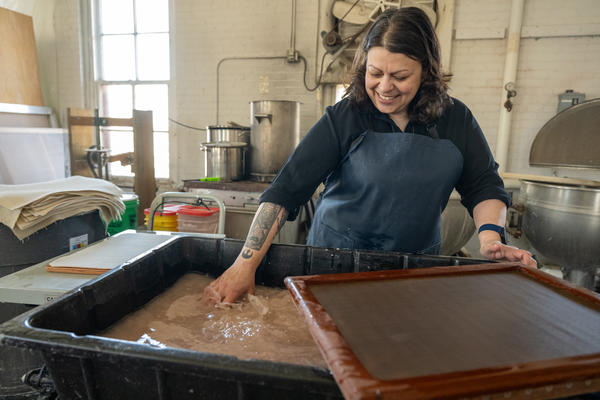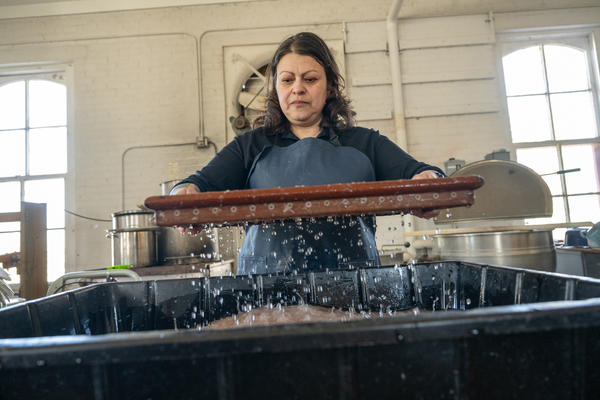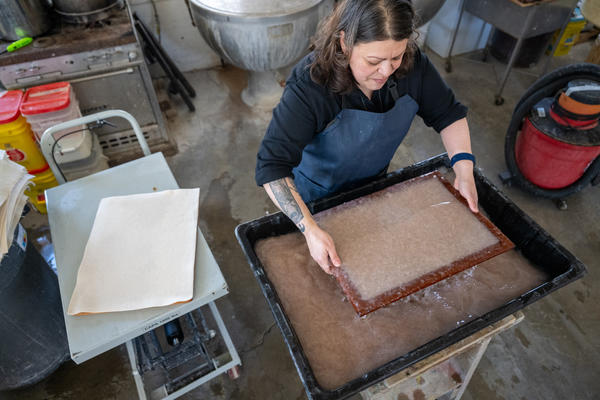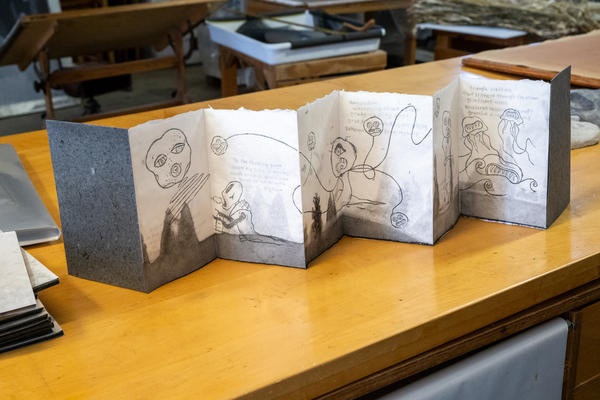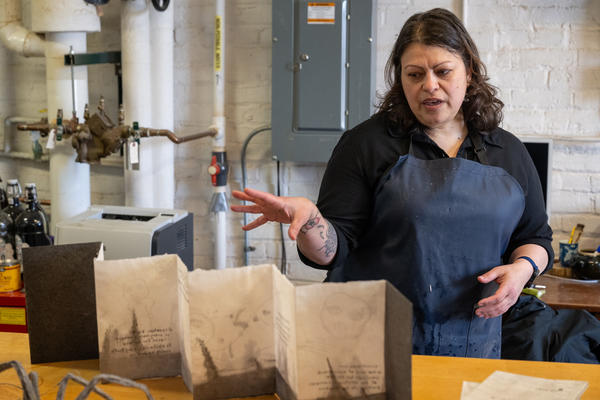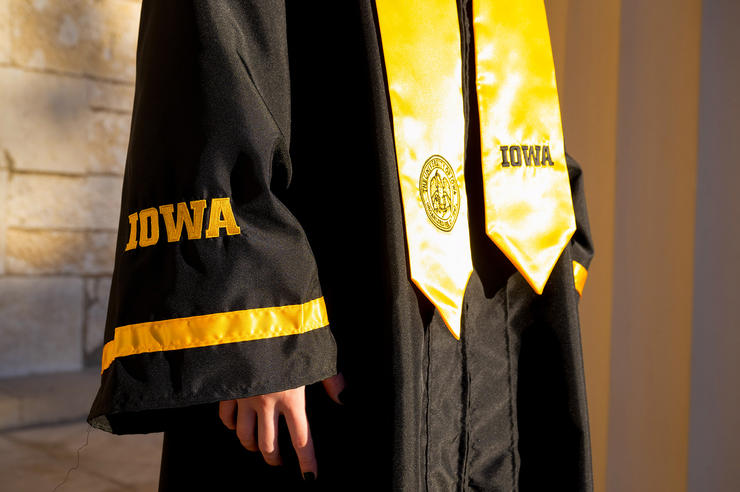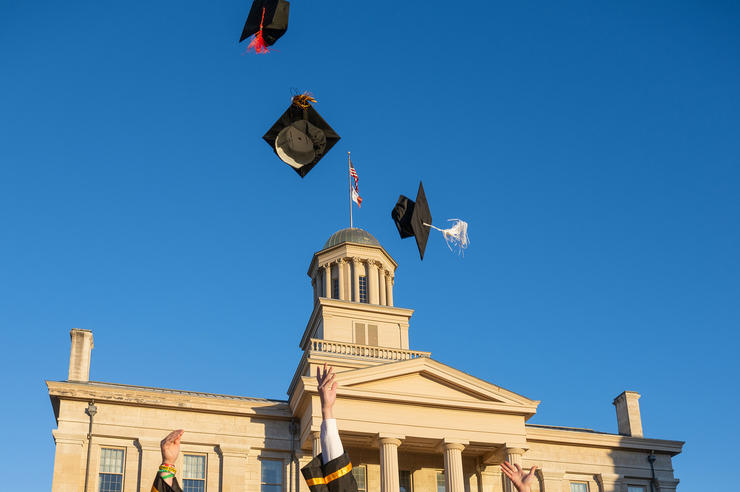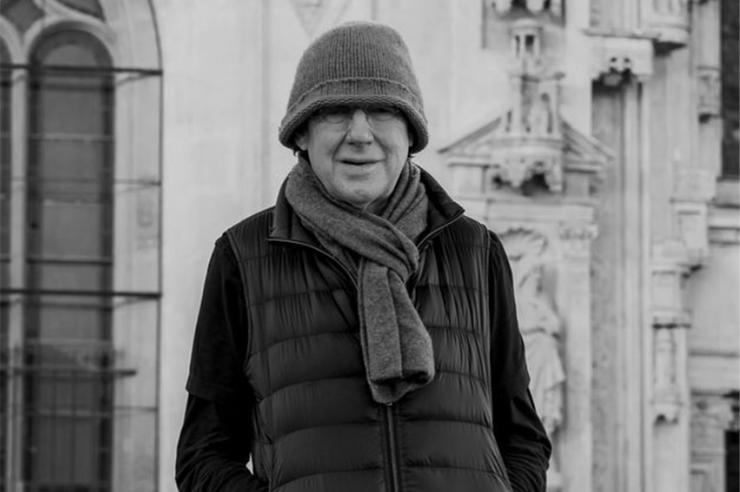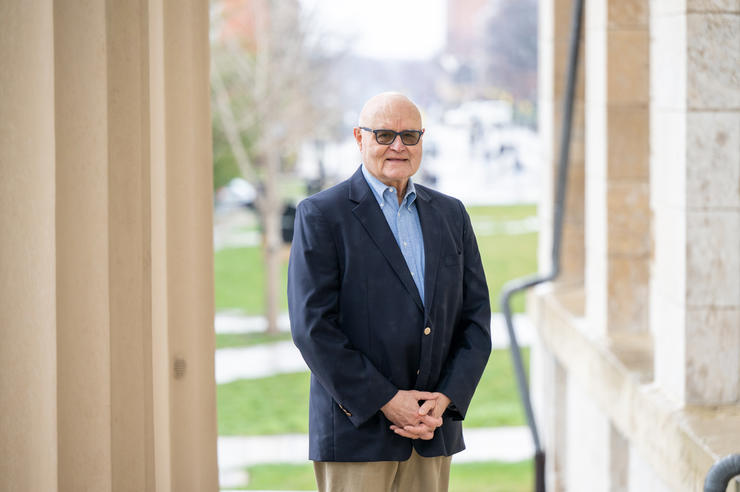Graduate spotlight: Jamie Capps
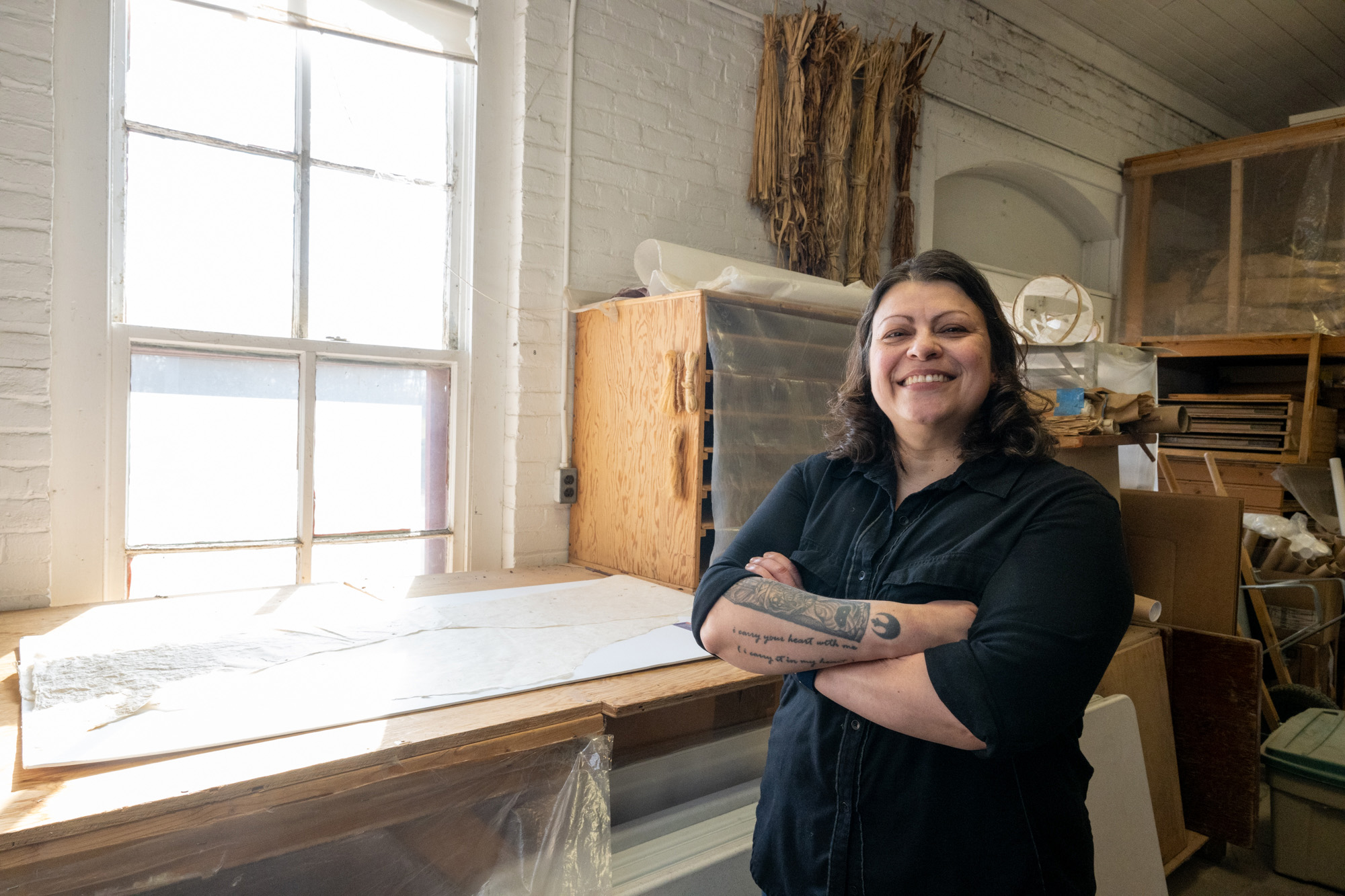
Jamie Capps had been working in logistics and finance for nearly two decades when she decided to quit her job and pursue her passion for art.
“I know it probably sounded bonkers at the time, and most of my friends were probably wondering what I was doing, but I know that this is where I belong and what I should be doing,” says Capps, who will graduate this spring with an MFA in book arts from the University of Iowa Center for the Book (UICB).
Hometown: Southern California
Degree: MFA in book arts
What’s next: Moving to Minneapolis to participate in its vibrant arts community and open her own studio.
When she started her art journey at Mount Holyoke College, she planned to become a printmaker.
“I got into papermaking totally by accident,” Capps says. “I saw this class on papermaking and thought, ‘Oh gosh, what is papermaking? I want to make paper.’ I had no idea how it was even done. I emailed the professor to ask if I could join her class and she said, ‘No problem. Collect some local plants and we can start.’
“I still appreciate and love printmaking, but I am just entranced by papermaking.”
A professor at Mount Holyoke suggested she check out Iowa for the MFA. She attended a Zoom presentation and chat hosted by the Center for the Book, which sealed the deal.
“I was like, ‘Wow. This looks like a group of people that I want to know and a program I really want to be a part of,’” Capps says. “It sounded like everything that I wanted to do, I could accomplish here in this program.”
What are the memories you’ll remember most from your time at Iowa?
Gosh, there’s been so many. I went on a study abroad with the current papermaking professor, Nicholas Cladis, and three other students, which was so enlightening. I’ve been to Penland School of Craft (in North Carolina). There’s been a lot of opportunities that I’ve been afforded while being here.
But I think while in Iowa and in my program, it’s been the community that I’ll remember most. I feel like the UICB attracts interesting people that are all very like-minded in a way. Just hanging out in our studio—we have a shared studio instead of separate ones—has been nice. That’s been the biggest part of this experience, having that camaraderie and being able to share it with them. Especially when you’re feeling stuck, you can ask, “How does this look?” and get informed feedback. So, I think the best experiences have just been being in that space.
Have you had a mentor here who’s really made an impact on you?
Because it’s such a small program and because we work intimately with all our professors, it’s hard to pick one person. But I think the person who has had the most impact on me is Emily Martin. And it’s funny because she teaches book arts and movable books. I don’t really make movable books. They’re very complex. In her classes, she’s challenged me in a way that I haven’t been challenged before. She’ll say to me, “You’re going to make the paper for this book. Why are you making it? What does that add to this?” She’s taught me how to look at all my choices and make informed decisions based on how I want the end product to look. And it sounds simple, but when you’re really thinking about it, there are so many decisions that go into making an artist book.
What’s been your favorite thing that you’ve learned while at the Center for the Book?
It’s so interesting because in the letter that I wrote when I was applying, I said, “I want to come here to make paper. This program is famous for papermaking. This is where I want to be and that’s all I want to do when I go there. I don’t really see myself making books.”
But now I do! And decided I wanted to make a book from start to finish, and I wanted to make every part of that book—making the paper for the book, printing the book, making the covers, assembling it, you know, every step of the process. And I have accomplished that with my thesis work.
Have you enjoyed teaching while you were here?
Thinking about teaching was nerve-wracking. We plan our own courses, which are usually condensed and over the summer. Our classes are often filled with engineering students who have never taken a studio class. It was a good learning experience—for me and them. I got to see how somebody who’s not a part of an artist community looks at what we do and understands it.
I was intimidated at first, but they were just the greatest group of people, and they were so willing to learn. At the end of it, hearing them say, “Look at me. I’m an artist,” made teaching probably one of the most fulfilling things that I’ve done since I’ve been here.
Who has inspired you during your time at Iowa?
I’m constantly looking at the work of my fellow MFAs and thinking, “That’s such an interesting idea. How did you do that?” I think we all really inspire one another.
My students also inspire me. Students who aren’t a part of a typical studio practice come in and look at things with such fresh eyes and are free to play with color and different processes. I might say, “OK, this is how you do it,” and they’ll respond, “Can we do it this way?” So, I’ll say, “Let’s try it and see what happens.” It broadened my way of thinking about how to teach.
